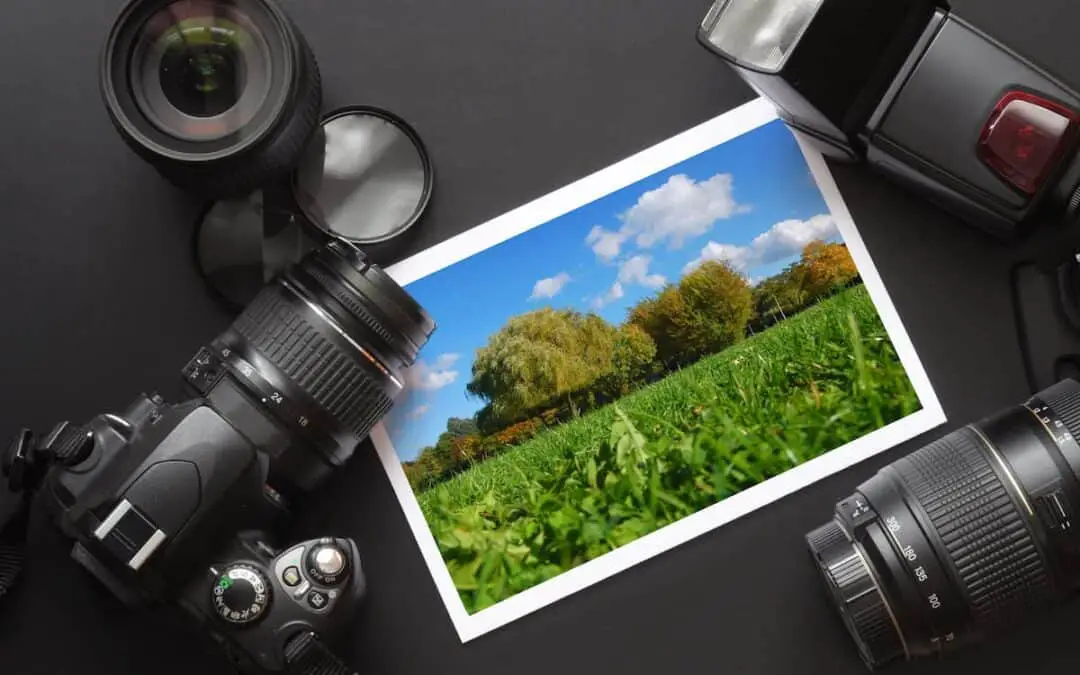Choosing the correct lens can be daunting even to a seasoned photographer. Finding the ideal lens for a specific photographic activity can be challenging with the wide range of lenses on the market, so it’s essential to learn the various types of lenses, their properties, and their functions. But have you ever wondered how many kinds of photography lenses exist?
Here are 11 types of photography lenses you need to know:
- Zoom lenses
- Prime lenses
- Wide-angle lenses
- Fisheye lenses
- Standard (kit) lenses
- Macro lenses
- Telephoto lenses
- Super-telephoto lenses
- Tilt-shift lenses
- Infrared lenses
- Other classifications
Every experienced photographer knows that high-quality lenses are the secrets to top-notch images. This article will explore different photography lenses, their features, and their functions. However, before we dive into the nitty-gritty of these lenses, let’s look at some basic knowledge of camera lenses.
Table of Contents
Photography (Camera) Lenses: The Basics
A lens is a device made of glass or transparent material that gathers light and concentrates it at a focal point. Like the lenses in our eyes, a photography or camera lens forms the image of an object by sending rays of light from the object to the film strip or digital sensor. Lenses can either be convex or concave and have additional features depending on their specific functions.
The lens is one of the most vital devices in photography. After absorbing light from the object, it filters and focuses on the film strip or sensor appropriately. However, the lens type on your camera will determine the quality of the images captured.
Camera lenses have the following characteristics:
- Focal length: refers to the optical feature of a camera lens that measures the distance (in millimeters) between the lens’ optical center and the film strip (or sensor). So, it tells you how much your camera can capture on a scene. And, you’ll find the focal length indicated on your camera in numerals such as 35mm or 85mm.
- Aperture: This is the opening that allows light into the camera and is measured in f-stops. However, f-stop values are counterintuitive since smaller values indicate large openings. The aperture size also determines the camera’s depth of field. For instance, a large aperture creates a shallow depth of field.
- Maximum aperture: is the widest distance (width) that a camera lens can open. If you’re a night photographer, a camera with the widest aperture is ideal as it captures images in low light conditions.
- Depth of field: is the distance between the closest and farthest sharp images in a photo. You can control your camera’s depth of field by opening or closing the aperture. However, other factors can also determine this, including your lens.
You can use a high-quality lens in an old camera to produce exquisite images. However, you can’t capture top-notch images with a poor-quality lens. Hence, it’s essential to know what to look for when shopping for an ideal lens.
Here are some factors to consider when buying camera lenses:
- Additional features: Apart from the essential elements of camera lenses, some types have other characteristics. These allow them to carry out specific functions. For example, most camera lenses have the autofocus capability that will enable them to achieve better focus.
- Size and weight: Lenses come in different sizes and weights. You will go for a lightweight and compact lens if you’re an avid travel photographer. But, you also have to consider what types of scenes interest you, as some heavier lenses (such as telephoto) might be perfect for capturing faraway objects.
- Cost: Some camera lenses can be pretty expensive, especially if they have additional features. However, you don’t have to hurt your pocket if you’re into general photography. Hence, you can go for a more generalized type, such as the medium-length zoom lens, which is ideal in different situations.
- Compatibility: It’s frustrating to buy a high-quality lens that isn’t compatible with your camera because it won’t function as intended. For instance, a Nikon lens may not be a perfect match for a Sony camera. So, you might need to use an adapter.
1. Zoom Lenses
Zoom lenses are your typical all-purpose photography lenses. They work well in different situations since the lenses use more glass, making light absorption and reflection more effective. Moreover, they’re among the most flexible lenses due to their wide focal length range (such as from 70-200mm).
Therefore, you don’t have to change your position when capturing close or far away objects. You only have to zoom your camera and get the best shot! Their great depth of field also allows you to capture images in both landscape and portrait.
Zoom lenses are best suited for almost all types of photography. So, you don’t have to switch between two or more types of lenses when you want to capture different kinds of images. You can use these lenses in travel, wedding, street, or nature photography.
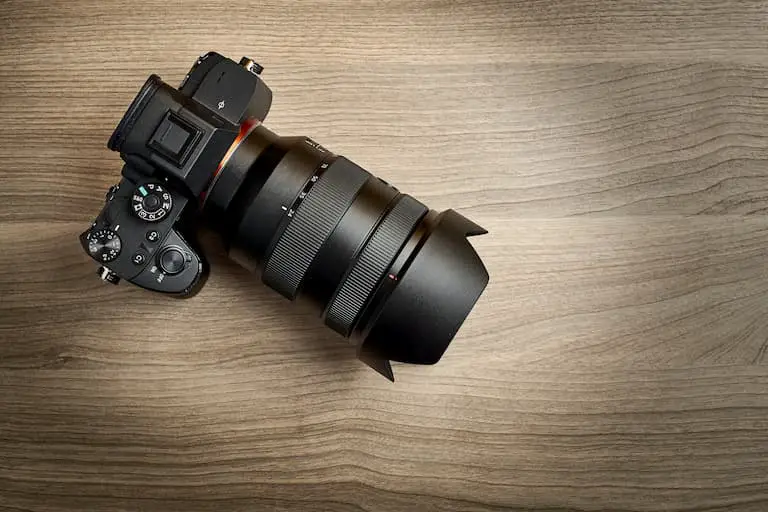
Pros
The advantages of using a zoom lens are:
- You can capture images from a great distance.
- You won’t have to move closer to an object to get a fantastic picture.
- They are incredibly versatile.
- They have better light reception, which will give you a clear, sharp image from various distances.
Cons
Still, there are some cons to these lenses. Here are the downsides of zoom camera lenses:
- They’re heavier than prime lenses since they contain more glasses. Hence, it would be cumbersome to carry them on long vacations.
- They don’t produce as sharp images as prime lenses.
- A good zoom lens is more costly than a high-quality prime lens.
- They aren’t the best type of lenses for making films.
2. Prime Lenses
Prime lenses are the photography lenses that most cameras have had for ages. Unlike zoom lenses, prime lenses have a fixed focal length. Therefore, you can’t zoom an image to attain a sharp focus – you need to move closer or farther from it.
Due to their rigidity (in terms of focal length), you can’t use prime lenses for general photography. So, these lenses are ideal for specific photographic niches, including portrait or landscape photography. For instance, the 35mm prime lens is perfect for taking landscape images.
Although they aren’t as versatile or flexible as zoom lenses, prime lenses have some advantages. They capture high-quality images when used in the correct niche. For instance, the 50mm zoom lens captures perfect portrait images and is thus, referred to as the ‘Nifty Fifty.’
The 50mm focal length is similar to that of a human eye. Hence, a 50mm prime lens will provide a cleaner and more realistic image.
You can use prime lenses in these types of photography:
- Wedding
- Portrait
- Landscape
- Streetscape
Pros
Here are the benefits of prime lenses:
- It produces realistic images that mimic the perception of the human eye.
- They capture sharp and clear images.
- They work well in low-light conditions.
- They are small and easy to transport.
- They are usually inexpensive.
Cons
The disadvantages of using prime lenses include:
- You can’t zoom an image due to fixed focal length.
- They aren’t suitable for capturing images of moving objects.
- You can lose perfect shots when switching lenses.
- They’re limited to specific types of photography.
3. Wide-Angle Lenses
As the name suggests, wide-angle lenses have a wider angle (that is, wider than standard zoom lenses). So, you’ll most likely go for them when you want to capture a wider field of view in your frame. The focal length of wide-angle lenses ranges from 16 to 36mm.
Wide-angle lenses also allow photographers to emphasize the distance and size difference between two objects. Therefore, the nearer object will appear more prominent than those in the background since the lenses exaggerate the sizes of nearby objects.
A wide-angle lens is best suited for landscape photography. Hence, these lenses allow you to capture more extensive scenery and create vivid pictures. Moreover, you can use these lenses in travel, cityscape, and architectural photography to take images of a whole building with excellent depth and 3D visuals.
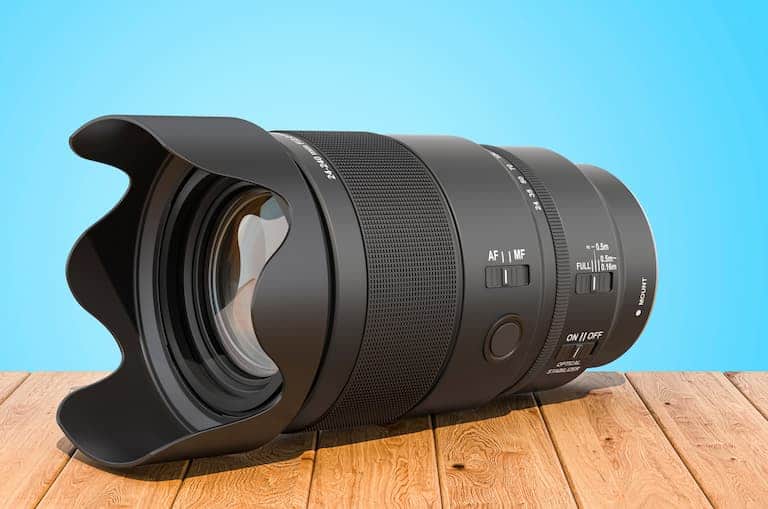
You can also subdivide wide-angle lenses into the following sub-categories:
- Standard wide-angle: lenses have focal lengths ranging from 24mm to 35mm. They’re ideal for cityscape photography.
- Ultrawide-angle lenses: their focal lengths fall below 16mm and are considered specialty lenses. So, they’re perfect for astrophotography as they can capture the entire Milky Way.
- Wide-angle lenses: have focal lengths ranging between 16mm and 24mm. They are best suited for landscape photography.
Pros
Here are some benefits of wide-angle lenses:
- They create more focus due to their greater depth of field.
- They’re lightweight lenses perfect for road trips, hiking, and vacations.
Cons
Disadvantages of wide-angle lenses include:
- They can form blurred images.
- They’re unsuitable for creating compression images.
4. Fisheye Lenses
They’re your perfect choice of lenses when you want to capture a vast field of view. Hence, fisheye lenses are ultra-wide lenses that create a ‘fisheye’ (distorted) effect that resembles GoPro images. Moreover, these lenses can capture a 180-degree radius around an object.
Fisheye lenses have focal lengths between 4mm and 14mm. They are best suited for abstract and creative forms of photography. Therefore, they’re perfect for landscape, interior design, and architecture photographers.
Pros
The pros of fisheye lenses include:
- They capture the most panoramic views of objects (100-180 degrees).
- They offer a better maximum aperture due to their ultra-wide capabilities.
- You can zoom images without moving nearer or farther.
- You can use them as security cameras due to their significantly wide field of view.
Cons
Here are the cons of fisheye lenses:
- They can create significant line distortion.
- They’re specialist lenses and not suitable for everyday situations, including wedding and portrait photography.
5. Standard (Kit) Lenses
Standard or Kit lenses are the typical or ‘normal’ lenses due to their acceptable focal length range. A standard (or kit) lens is also a zoom lens. Hence, you can use it for various forms of photography.
Standard lenses have focal lengths ranging from 35mm to 85mm. Therefore, this range accommodates wider image angles and full-frame photos. Moreover, these lenses create images with almost human-like depth (both in visual angles and perspective).
An excellent example of the standard lens is the 50mm standard, and it’s one of the must-have lenses for amateur and seasoned photographers. Accordingly, many cameras come with this lens out-of-the-box.
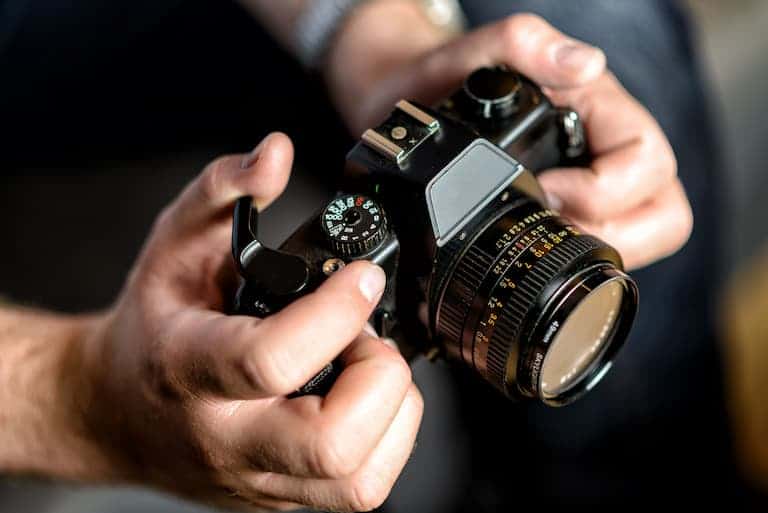
You can use standard (kit) lenses in these types of photography:
- Landscape
- Architecture
- Events
- Street
- Travel
- Portrait
Pros
Advantages of standard lenses include:
- They’re lightweight and compact.
- They are less expensive than most camera lens types.
- The lenses capture realistic images.
- You can use them as complementary lenses.
Cons
Here are the disadvantages of standard lenses:
- They have slower autofocus.
- They may not capture images sharply.
- They have limited focal length.
6. Macro Lenses
As the name suggests, these are the ideal lenses for creating macro images (photographs). These lenses allow you to take a close-up shot of objects, capturing more details, and their focal length range is from 35mm to 200mm.
Macro lenses have a unique design, allowing you to take sharp images even at a closer range. So, if you’re a keen-to-detail photographer, you’ll have no trouble capturing the water droplets on grass blades or fine hairs on insect legs. Moreover, they reproduce real-life images in a 1:1 ratio like a human eye.
You can use macro lenses in these types of photography:
- Nature
- Wedding
- Commercial (e.g., in jewelry photo shoots)
Pros
Here are the pros of macro lenses:
- They can capture fine details and minute objects.
- You can use them for filmmaking.
- They can produce maximum magnification (up to x5) of an object.
- They create high-quality images.
Cons
Their disadvantages include:
- They’re specialty lenses that aren’t ideal for general or portrait photography.
- They are expensive.
- The lenses have a small depth of field.
- Sometimes, they can have slower shutter speed or long focusing times.
7. Telephoto Lenses
Telephoto lenses are large (and bulky) lenses that resemble telescopes in their working mechanism. Therefore, they’re best suited for focusing on distant objects since they use shorter focal lengths than the lens’ physical length. Telephoto lenses have focal lengths ranging from 85mm to 600mm.
You’ll find different types of telephoto lenses in the market, including short-range, mid-range, and super-telephoto. Short telephoto lenses have a focal length of 85mm to 135mm and are suitable for portrait and street photography. On the other hand, the focal length in medium telephoto lenses is 135mm+, and they’re perfect for wildlife, sports, and action photography.
Telephoto lenses fall into the zoom category of lenses. They have incredible magnification, allowing you to isolate faraway objects. Hence, sport and wildlife photographers prefer these photography lenses as they enable them to create a sense of intimacy with distant objects.
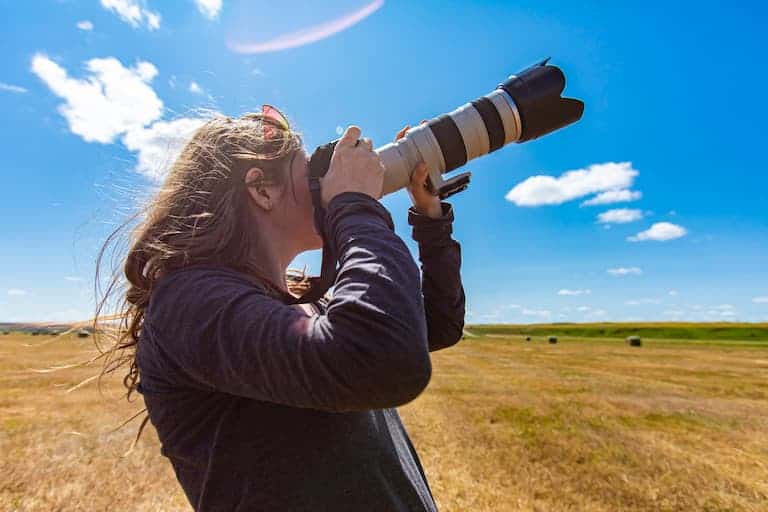
Pros
Advantages of telephoto lenses include:
- They’re perfect at capturing distant objects.
- They have a shallow depth of field, allowing you to create more blur in the background.
- You don’t need to move since the lenses are zoomable.
Cons
Here are the disadvantages of telephoto lenses:
- They’re large and bulky and may require you to use a tripod for support.
- They are costly compared to other lens types.
- Not ideal for amateurs.
- Viewers may get a sense of detachment when viewing the photographs.
8. Super-Telephoto Lenses
These are ultra-long telephoto lenses with a higher focal length range. Most telephoto lenses are 600mm to 800mm. Still, some professional wildlife, sports, and news photographers use super-telephoto lenses with up to 5000mm focal lengths.
Now, you can try figuring out what kind of magnification these high-end lenses exhibit (it’s usually quite impressive).
Super-telephoto lenses are probably the type you’ve seen sports photographers use when filming events from the sidelines. These lenses also have an extremely shallow depth of field, allowing them to bring in more light.
Since the depth of field and focal length are inversely proportional, a small depth of field means a greater focal length and more light coming in. Hence, a photographer creates a higher compression. However, this feature can be a downside in some situations, especially when you want to produce high-quality images.
Super-telephoto lenses are commonly used in the following types of photography:
- Sports
- Wildlife
- Astronomy
Pros
Here are the pros of super-telephoto lenses:
- They are compatible with crop sensor cameras.
- They’re perfect for capturing significantly distant objects, including celestial bodies.
- Most of them have image stabilization features.
Cons
Disadvantages of super-telephoto lenses include:
- They’re large and bulky.
- They are very costly.
- They are not suitable for general photography.
9. Tilt-Shift Lenses
If you’re a creative photographer who loves producing distorted images, tilt-shift lenses should be in your photography kit. These are specialty lenses that make images appear smaller than usual. So, they enable you to have greater control of your camera’s depth of field.
Also referred to as ‘perspective control lenses,’ tilt-shift lenses tilt according to the camera’s image sensor. Therefore, they don’t lie parallel to the sensor, altering the depth of focus.
Tilt-shift lenses come in handy when you want to capture an image from different vantage points. So, tilting their position recenters the image, allowing the camera sensors to capture it even when you don’t move the camera.
Most tilt-shift lenses have a focal length range of 17mm to 35mm. You can use them in various forms of photography, including:
- Architecture
- Fine art
Pros
Here are the merits of tilt-shift lenses:
- They can create a miniature effect by mimicking a shallow depth of field.
- They manipulate a scene’s vanishing point.
- You can reduce perspective distortion (especially in architectural photography).
- They create sharp focus due to excellent contrast and saturation.
- Allow you to capture a mirror’s image without the reflection’s interference.
- Enable you to shoot portraits with different points of focus.
Cons
Disadvantages of tilt-shift lenses include:
- They are bulky.
- They are usually for professional or specialized photography.
- They are expensive.
- Mostly come in fixed focal lengths (prime lenses).
10. Infrared Lenses
Unlike the human eye, an infrared lens can capture infrared rays (IR). Therefore, they filter out all the other wavelengths, only allowing the light from the near-infrared, short-wave IR, mid-wave IR, and long-wave IR to enter the camera.
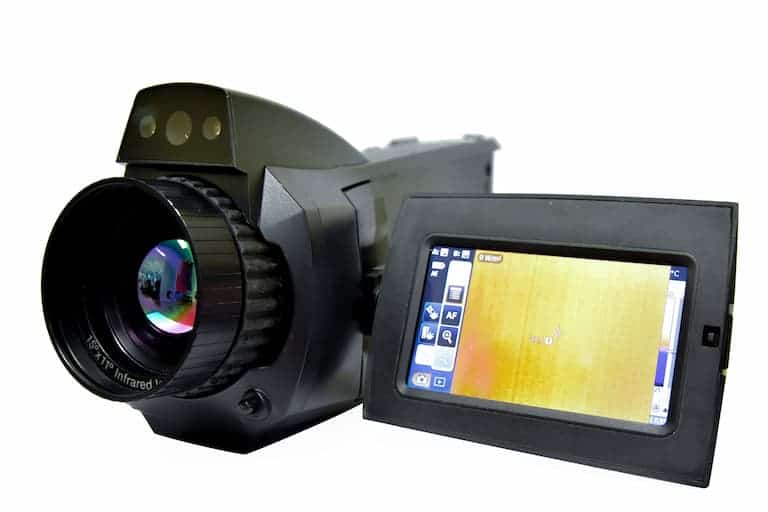
Therefore, infrared lenses are specialty lenses designed for specific forms of photography. Unlike other camera lenses that play with perspective, the IR lenses distort the entry of light. Hence, photographers use them to create unique visual effects.
These lenses use anti-reflection coatings or specific substrates to filter out other types of wavelengths.
You can use an infrared lens in these types of photography:
- Spectroscopy
- Thermal imaging
- FAIR
Pros
Advantages of infrared lenses include:
- They capture objects at higher wavelengths than a naked eye can see.
- They optimize a camera’s performance even in low light conditions.
- They improve focus and image quality by removing focus shift problems.
Cons
Here are the disadvantages of infrared lenses:
- You need top-notch expertise to operate an IR lens.
- You can’t use a converted camera (for IR lenses) in other forms of photography.
- They’re costly.
- They require higher wavelengths (above 700 nm).
11. Other Classifications
Apart from the photography lens categories we’ve explored in this article, you can also categorize lenses into two groups. This alternative way of classifying lenses is based on their speeds. Hence, you can have slow and fast lenses.
In addition to depth of field, the aperture also determines a lens’ speed. So, wider apertures (f/2.8 and above) increase a lens’ speed. Contrastingly, narrower apertures (f/4 and below) reduce the lens speed.
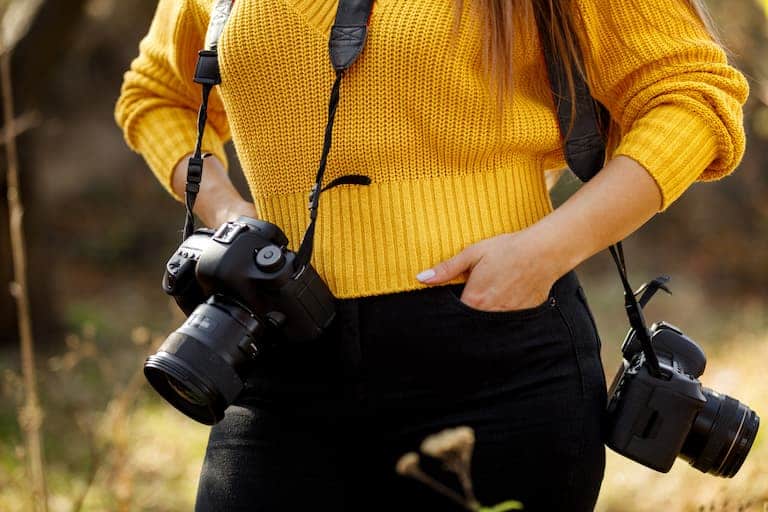
Let’s have a look at the two types of photography lenses based on speed:
Fast Lenses
These are lenses that allow more light and enable faster shutter speeds. Therefore, you can capture images even in low-light conditions. However, they’re more costly than slow lenses.
Fast lenses are ideal for various types of photography, including wildlife and street photography. For instance, you can capture clitters on a plant when there’s a dim light at sunrise or sunset.
Slow Lenses
Slow lenses have narrower apertures, allowing less light to enter. Therefore, they can only capture high-quality images under bright light conditions. The narrow aperture also means that these lenses have a greater depth of field.
So, slow lenses are best for outdoor photography in bright conditions. They can be excellent for portraits, landscapes, and architectural photography, but they aren’t great at capturing moving objects.

